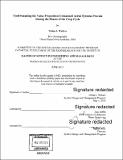| dc.contributor.advisor | Joan Rubin. | en_US |
| dc.contributor.author | Walters, Tobias J | en_US |
| dc.contributor.other | System Design and Management Program. | en_US |
| dc.date.accessioned | 2018-05-17T19:07:18Z | |
| dc.date.available | 2018-05-17T19:07:18Z | |
| dc.date.copyright | 2015 | en_US |
| dc.date.issued | 2015 | en_US |
| dc.identifier.uri | http://hdl.handle.net/1721.1/115458 | |
| dc.description | Thesis: S.M. in Engineering and Management, Massachusetts Institute of Technology, System Design and Management Program, 2015. | en_US |
| dc.description | Cataloged from PDF version of thesis. | en_US |
| dc.description | Includes bibliographical references (pages 73-77). | en_US |
| dc.description.abstract | Increasing crop productivity is a challenge as old as human history. Advancements in technology have allowed farmers to produce ever-increasing amounts of food on a given amount of land. With the world's population expected to reach roughly nine billion by 2050 (United Nations 2013), the demand for food will require increasingly improved methods of agricultural production. One of these potential methods is the use of unmanned aerial vehicles (UAVs) to monitor crop health and identify potential issues. This thesis will explore how current stakeholders plan to utilize this technology and the perceived value they believe it will deliver across the various phases of the crop cycle. This thesis begins by reviewing modem precision agriculture management practices and discussing how remote sensing plays a role in improving the efficiency of these types of farming methods. It also identifies a number of challenges facing the industry to include the impact of current regulations on the market. This thesis develops a stakeholder value network that clarifies the tangible and intangible value exchanges between the focal organization and its stakeholders. As well as constructing an OPM (Object Process Methodology) model to describe the system and demonstrate the stakeholder interactions and system process and sub-process decomposition. It also provides visual display of how the value is delivered across these processes. The final aspect of the research for this thesis is to identifies the lead users for these systems and determines how they measure the value of the data provided by UAVs for remote sensing and crop management decisions in support of farming operations. The value proposition for the various crop phases and the ideal uses cases discussed by lead users in this thesis may be used to guide future research in agriculture technology development, and drive further innovation in the emerging field of commercial unmanned aerial system use. | en_US |
| dc.description.statementofresponsibility | by Tobias J. Walters. | en_US |
| dc.format.extent | 82 pages | en_US |
| dc.language.iso | eng | en_US |
| dc.publisher | Massachusetts Institute of Technology | en_US |
| dc.rights | MIT theses are protected by copyright. They may be viewed, downloaded, or printed from this source but further reproduction or distribution in any format is prohibited without written permission. | en_US |
| dc.rights.uri | http://dspace.mit.edu/handle/1721.1/7582 | en_US |
| dc.subject | Engineering and Management Program. | en_US |
| dc.subject | System Design and Management Program. | en_US |
| dc.title | Understanding the value proposition unmanned aerial systems provide during the phases of the crop Cycle | en_US |
| dc.type | Thesis | en_US |
| dc.description.degree | S.M. in Engineering and Management | en_US |
| dc.contributor.department | Massachusetts Institute of Technology. Engineering and Management Program | en_US |
| dc.contributor.department | System Design and Management Program. | en_US |
| dc.identifier.oclc | 1035418618 | en_US |
